ASRock Rack 1U2E-C252 Internal Hardware Overview
Getting inside the system, we see cooling directed mostly towards the CPU and memory, aside from the fan for the 2.5″ drive bays. We will note that there are no fans for the expansion slot, and that is on purpose.
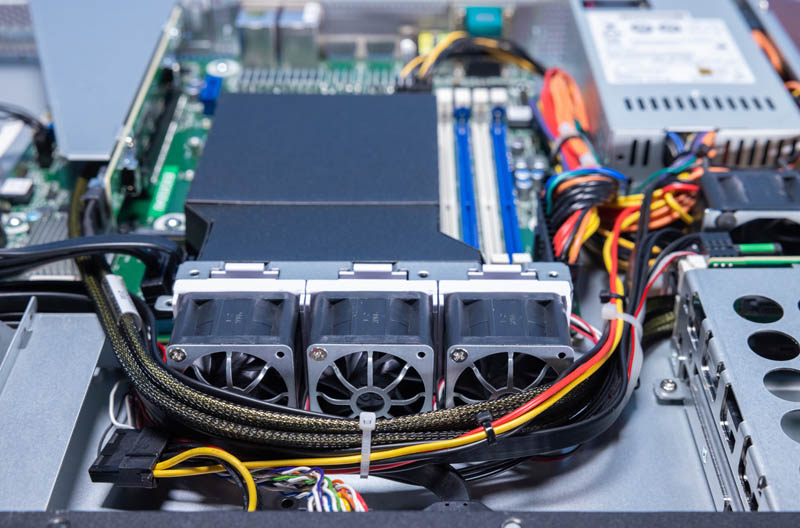
The CPU socket is designed for the Intel Xeon E-2300 series and 10th Gen Pentium. Next to it are four DDR4 DIMM slots. One can use up to 128GB of ECC memory with this setup.
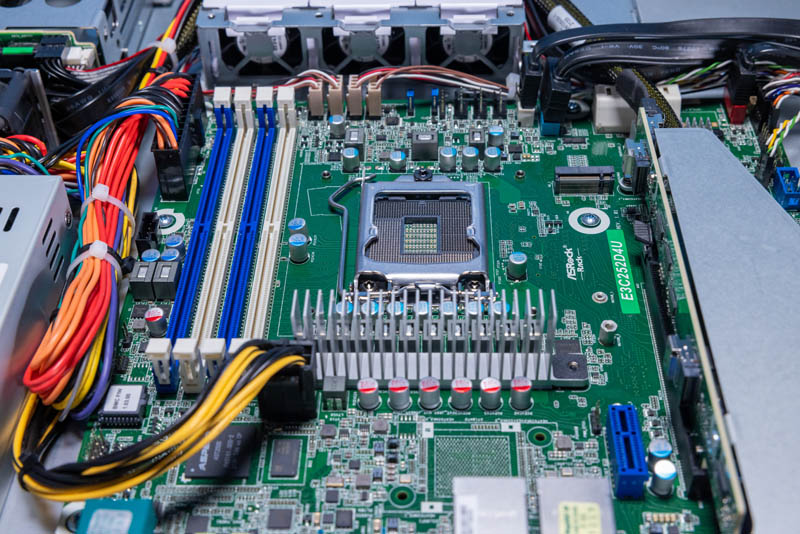
Next to the CPU socket, there is a M.2 slot if you want to add an extra boot device. Since this is n Intel C252-based server, this is a PCIe Gen3 x2 slot or can be used for SATA SSDs. These days, we just suggest getting NVMe M.2 drives. In a three drive configuration, this is likely to be the boot device.
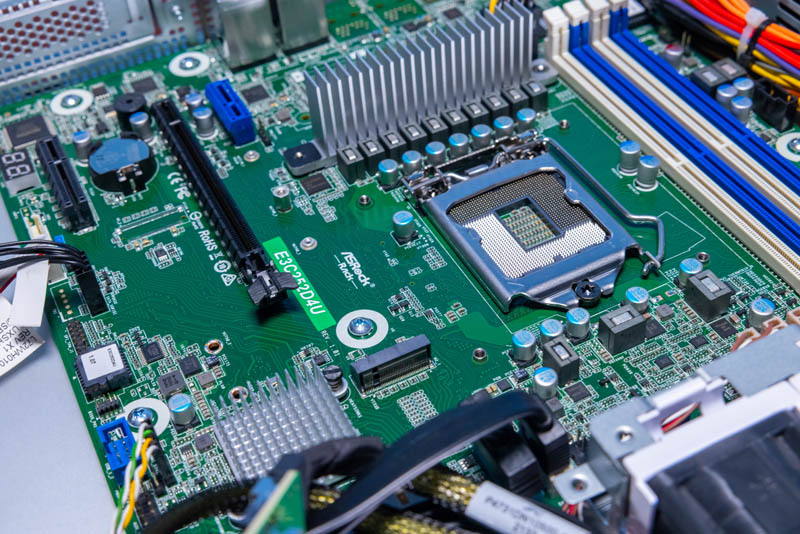
Behind the VRM heatsinks, there is the ASPEED AST2500 BMC. There is also an unused pad array that is for another version of the motherboard/ system with 10GbE.
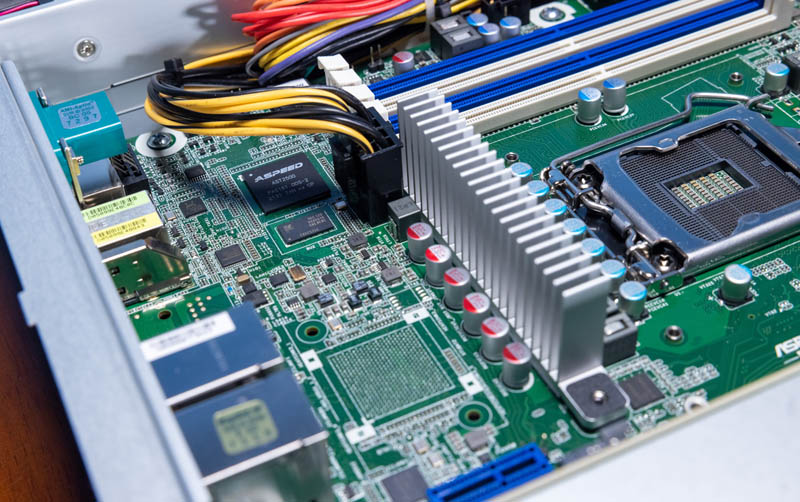
Taking a look at the motherboard, this is an ASRock Rack E3C252D4U motherboard. There is a PCIe x1 and a x4 slot that are not being used. Along the bottom of the motherboard though, there is a POST code LCD display for troubleshooting.
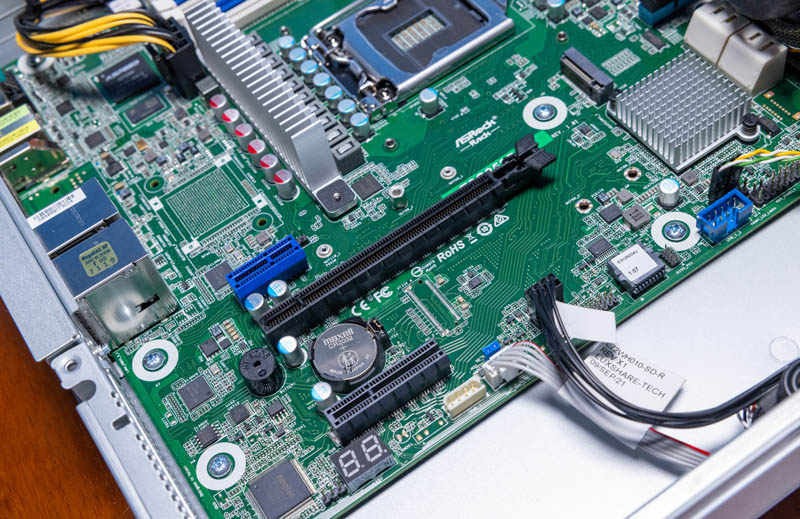
Perhaps the most interesting feature though is the riser that goes in the PCIe slot. Looking at the slot from the CPU side of the motherboard, we can see that this is not a simple right-angle riser we see in many 1U servers.
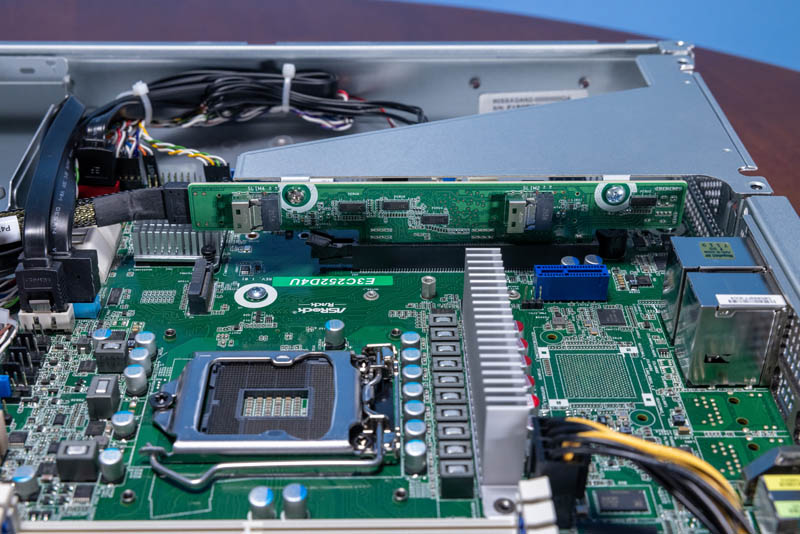
Instead, there are two SlimSAS connectors not being used. This riser is taking the PCIe x16 slot and exposing lanes to SlimSAS for cabled connections.
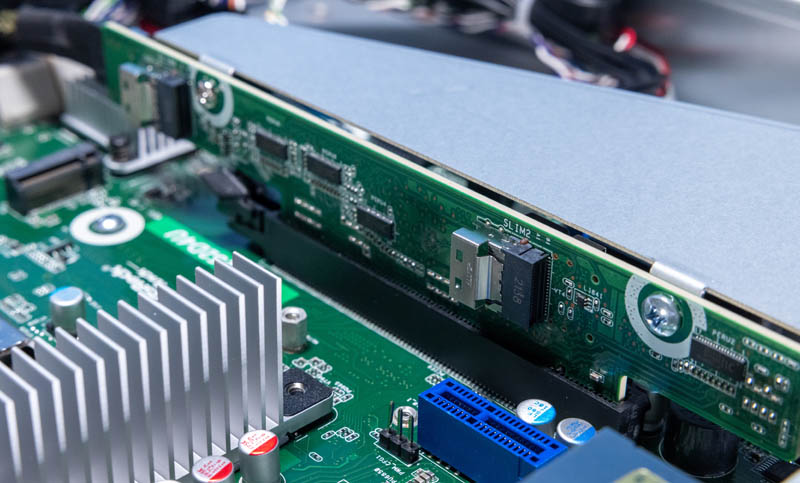
While the two on the CPU side of the motherboard are not being used, the two on the expansion slot side are being used for the NVMe SSDs. This is a really interesting design. It somewhat feels like this server would be better served with another 2×2.5″ array instead of the optical drive option so that all four connections could be used. If not, then having a PCIe x4/x8 slot for the riser and then the 2x SlimSAS for the 2.5″ NVMe drives would be great as well. The system does not have the ability to use expansion cards as configured. In this market, 1GbE and 1-3 drives is common, but having the option to add a higher-speed NIC would be nice. For some dedicated hosting providers, infrastructure is being upgraded to 10GbE even in lower-cost setups so that is a good reason to at least have an option to upgrade via PCIe here. Then again, many low cost hosting providers will not add PCIe cards for a non-standard configuration.
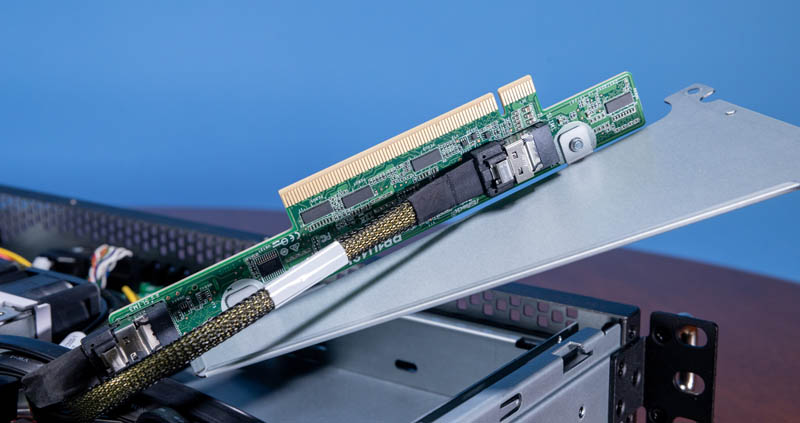
Overall though, the Intel C252 PCH and the limited drive expansion is really spot-on what the market demands of a system like this as it limits costs while still providing the features that are commonly required.
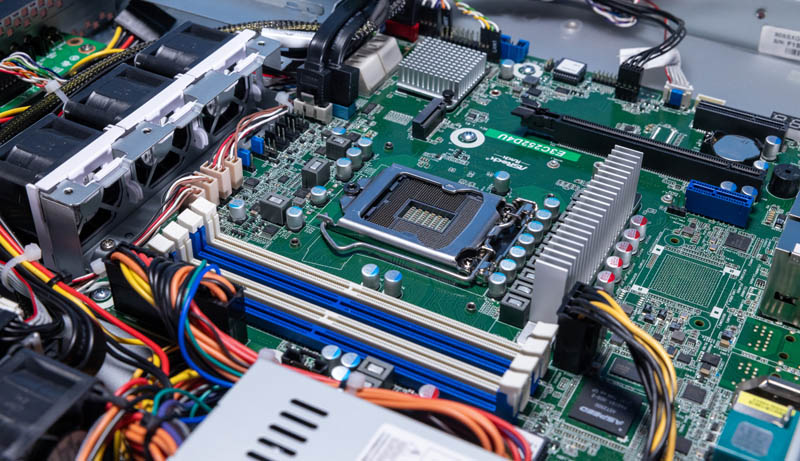
Next, we are going to look at the block diagram, then discuss management, and performance.




Hi Patrick,
Thank You for another intriguing review for STH fans. …You are spot on with your recommendation to give up antiquated CD-ROM slot, and go with 4×2.5″ drives. Maybe add a pair of 10gbe SFP or RJ45 ports too for that vacant 2 X RJ45 area while they are at it;).
Best Regards,
ABQ 🙂
Interesting product.
Spotting those Mini-SAS connectors on the riser is useful info. I wonder if ASRock designed and built that riser for some other product, and then they realized when they built this product they already had a riser card design.
The ASRock web site has the chassis dimensions:
393.2 x 430 x 43.5 mm (15.5” x 16.93” x 1.71”)
So, not the shortest depth chassis out there, but shorter than most which makes this product useful in certain installations.
Is this support VMware vSphere 7.0?
We can use extra gpu card? Something like a2000/70watt ?!